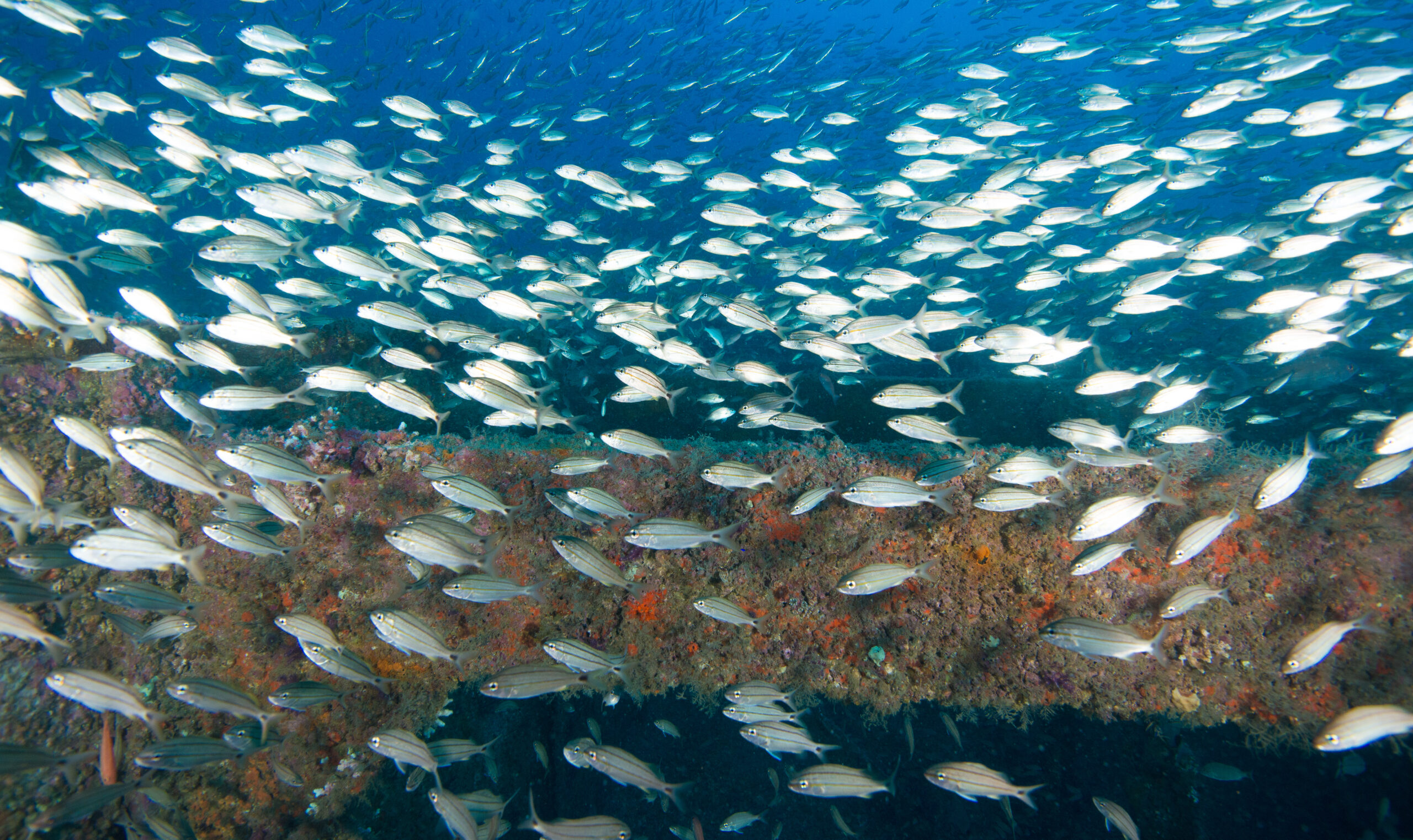Do Artificial Reefs Enhance Fish Habitats?

A new study demonstrates that artificial reefs benefit fish communities but that solutions are not one-size-fits-all.
Research Need
Human-made structures, including ships, concrete pieces, bridge spans, and airplanes, are deliberately sunk on the seafloor. These assemblies, called artificial reefs, are intended to form habitat for reef fish, as well as to promote fishing and diving opportunities. Despite the popularity of artificial reefs as tools for creating fish habitat, questions remain about whether these artificial reefs function similarly to rocky and coral reefs in supporting diverse fish communities.
What did they study?
A team of researchers from NOAA’s National Centers for Coastal Ocean Science and Southeast Fisheries Science Center reviewed 39 peer-reviewed publications from around the world to test whether artificial reefs perform similarly to natural reefs. They examined whether artificial reefs host equivalent numbers and varieties of fish to nearby rocky reefs and coral reefs by looking at the density, biomass, species richness, and diversity of fish.
What did they find?
The team discovered that artificial reefs support comparable amounts and assortments of fish as their natural reef counterparts.
When the researchers dug deeper into the data, however, they found that artificial reefs in certain locations and made of certain materials may perform better than others. In particular, artificial reefs that are located in the Atlantic Ocean or that are composed of concrete host higher densities of fish than natural reefs host.
Also, the team found a higher total mass of fish (“biomass”) on artificial reefs that are composed of more than one material, in comparison with the biomass on natural reefs.
So what?
Insight provided by the synthesis on the ecological role of artificial reefs will help guide habitat enhancement strategies by state and federal management agencies, which, in turn, will maximize the likelihood of success of artificial reefs, as well as fostering fishing and diving opportunities.
Reading
Paxton AB, Shertzer KW, Bacheler NM, Kellison GT, Riley KL and Taylor JC (2020) Meta-Analysis Reveals Artificial Reefs Can Be Effective Tools for Fish Community Enhancement but Are Not One-Size-Fits-All. Front. Mar. Sci. 7:282. doi: 10.3389/fmars.2020.00282
Funding was provided by NOAA National Centers for Coastal Ocean Science and CSS-Inc.
Summary by Avery Paxton and Chris Taylor
Lead photo: J. McCord / Coastal Studies Institute
The text from Hook, Line & Science is available to reprint and republish, but only in its entirety and with this attribution: Hook, Line & Science, courtesy of Scott Baker and Sara Mirabilio, North Carolina Sea Grant. HookLineScience.com
Sign up for the Hook, Line & Science newsletter here.
- Categories:



